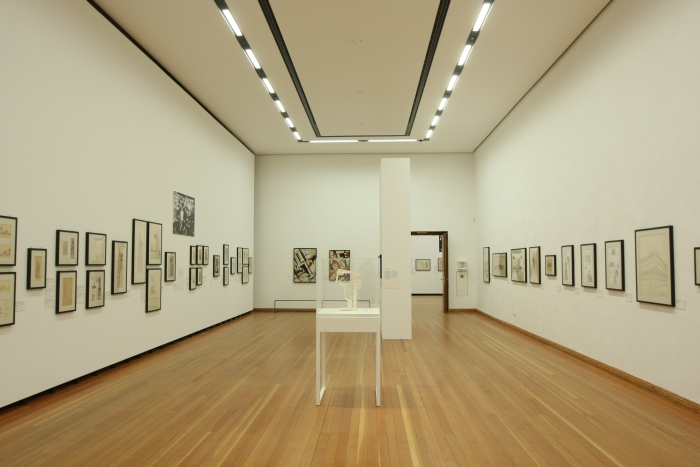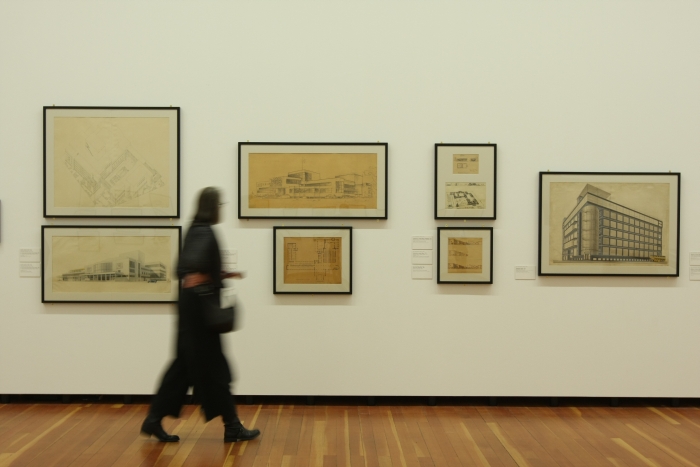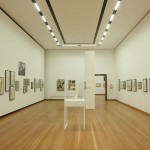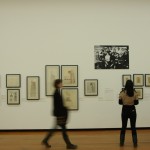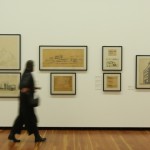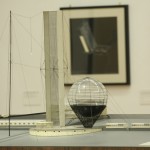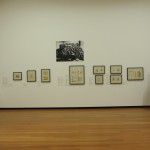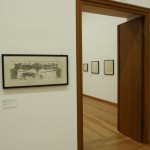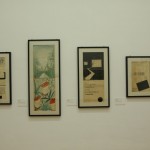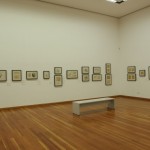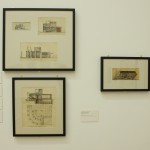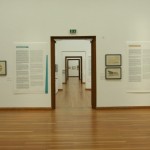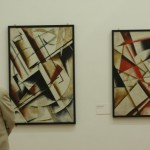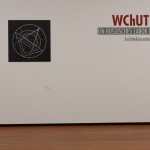VKhUTEMAS – A Russian Laboratory of Modernity, Martin-Gropius-Bau, Berlin
Just as it seems that the press conference ahead of the opening of the Martin-Gropius-Bau Berlin’s new exhibition, “VKhUTEMAS – A Russian Laboratory of Modernity”, is approaching its end, yet another, final, question is posed. Martin-Gropius-Bau Director Gereon Sievernich smiles warmly and responds with a very good natured “My, have you all got a lot of questions today!”
Yes.
Unsurprisingly.
Exhibitions, or indeed any form of academic presentation, about the Russian art school VKhUTEMAS don’t exactly occur on a regular basis.
Yet much like Der entfesselte Blick at Marta Herford, VKhUTEMAS – A Russian Laboratory of Modernity covers a moment of architecture history, and for all an architecture institution, that really does deserve more public attention and understanding.
Established in Moscow in 1920 VKhUTEMAS thanks its dauntingly ungainly name to the acronym of its full title: Vysshiye Khudozhestvenno-Tekhnicheskiye Masterskiye or Higher Art and Technical Studios for all without the benefit of an East German education.
Conceived as an institution where art and architecture could combine to help form a new Russia, and for all new Russians, VKhUTEMAS comprised eight faculties teaching subjects such as, for example, printing, textiles, ceramics, painting and architecture.
In its first year VKhUTEMAS had some 2000 enrolled students and counted amongst its teaching staff leading Russian artists and architects of the age including Wassily Kandinsky, Alexander Rodchenko and Nikolai Ladovsky.
Largely avant garde in its outlook VKhUTEMAS not only helped develop and propagate influential art and architecture movements including constructivism or rationalism, but through contact with other institutions and protagonists also helped disseminate and popularise the ideals of European modernism; most notably perhaps with their contribution to the 1925 L’Exposition internationale des arts décoratifs et industriels modernes in Paris, a fair which saw the first large scale international presentation of VKhUTEMAS projects including Konstantin Melnikov’s Russian Pavilion, Alexander Rodchenko’s “Workers Club” and Lyubov Popova’s textile designs.
In 1927 evolving attitudes towards the avant garde saw the teaching direction and focus change, as did the institutions name, VKhUTEMAS becoming VKhUTEIN, and by 1930 the changing political realities in Stalin’s Russia made an institution such as VKhUTEIN and its un-Russian approaches and ideas impossible; consequently it surprised no-one when in 1930 VKhUTEIN was formally closed.
And that is about as brief a history of VKhUTEMAS/VKhUTEIN as you will find in VKhUTEMAS – A Russian Laboratory of Modernity, for despite the title the exhibition isn’t about the school itself but rather about the architecture faculty and for all how the students learned and the projects that were developed there, if only very rarely realised.
Curated by the Shchusev State Museum of Architecture in Moscow VKhUTEMAS – A Russian Laboratory of Modernity presents some 250 sketches, paintings, models and collages through which the teaching methods and structures in the architecture faculty are elucidated, including, for example, the relevance, importance and indeed revolutionary nature of classes in subjects such as “determination of space”, “determination and representation of volume and weight” or “determination of the geometric characteristics of a form”. Particularly fascinating and entertaining are the numerous diploma projects presented. From the very beginning VKhUTEMAS students completed diploma projects based on real, existing architecture and urban planning projects of the period, and a genuine highlight in this regard is Ivan Leonidov’s 1928 project for the V. I. Lenin Institute for Librarianship. In addition a special mention must go to the presentation of designs VKhUTEMAS students created for the competition to construct the so-called International Red Stadium (MKS) in Moscow. A competition Nikolai Ladovsky won, but on account of the volatile nature of late 1920s Soviet politics was unable to realise. Just one of the many great unbuilt designs to be found in the exhibition.
Despite being largely an exhibition of seventy year old sketches, VKhUTEMAS – A Russian Laboratory of Modernity is a very open, affable and unintimidating exhibition which provides the information you need and then leaves you to follow those tracks that most interest you. Sounds obvious we know, but is not a state of affairs all exhibitions achieve. Especially not all architecture exhibitions.
Given VKhUTEMAS’ avant garde approach, the range of subjects taught, the focus on the future society and it ultimately being closed by a repressive, populist, regime, VKhUTEMAS is often referred to as the Russian Bauhaus: a not completely inaccurate comparison but also a completely misleading one. However, given the lack of information most of us have on VKhUTEMAS Bauhaus is the most obvious reference, and so a little over generalising is perfectly valid. Not least because just as there were similarities between the two institutions, there was also close contact. Aside from Wassily Kandinsky who taught at both institutions, members of both schools regularly met at exhibitions and congresses throughout the 1920s and in 1928 Gunta Stölzl travelled with a group of students to Moscow and VKhUTEMAS. And perhaps most infamously, following his sacking as Bauhaus Director in 1930 Hannes Meyer transferred to VKhUTEMAS, just before it was closed.
As a brief aside, during the aforementioned press conference it was revealed that the Shchusev State Museum of Architecture and Stiftung Bauhaus Dessau had/have been in talks about organising some form of exhibition exploring the links between the two institutions. However, it appears that the driving force on the Dessau side was former Bauhaus Dessau Director Philipp Oswalt and that since his removal, sorry, since the non-renewal of his contract, the plans have lain somewhat on ice. It is to be hoped new Bauhaus Dessau Director Claudia Perren picks up that particular baton. It would certainly make an interesting addition to the forthcoming Bauhaus centenary celebrations in 2019. And course the VKhUTEMAS centenary celebrations in 2020.
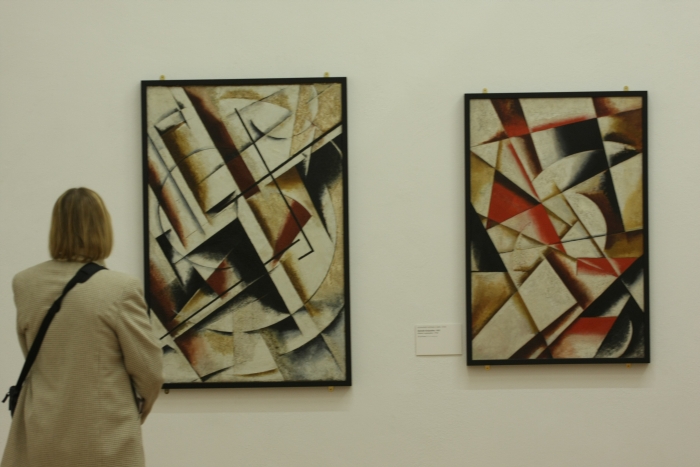
Abstract compositions from 1922 by Alexander Vesnin, as seen at VKhUTEMAS – A Russian Laboratory of Modernity, Martin-Gropius-Bau, Berlin
Just as there are invariably hoards of architecture smart alecks who claim to always have been huge admirers of Heinz and Bodo Rasch, so to will you invariably meet someone who claims to have always understood VKhUTEMAS and its role in the development of the European art and architecture traditions. Ask such people to name four members of the VKhUTEMAS teaching staff. Apart from Wassily Kandinsky. They’ll struggle.
VKhUTEMAS – A Russian Laboratory of Modernity at the Martin-Gropius-Bau Berlin however makes deliciously clear that we all should be able to name four members of the teaching staff, if not more, and also explain both the nature of the inter-collegial conflicts which plagued the institution and in how far the school’s legacy can be found in contemporary architecture and design. We should be able to do such not just on account of the works the students produced and the contribution they made to the development of our modern understanding of space and the built environment, but also on account of the teaching methods and structures the school developed and propagated.
VKhUTEMAS – A Russian Laboratory of Modernity is an excellent place to start learning. As an exhibition it doesn’t explain the complete story, and yes at times could be accused of being a little too superficial, perhaps even a little too uncritical; however, as an exhibition it does more than enough to not only provide an accessible introduction to the subject but also to inspire you to learn more. To ask a few questions. And then just one more……
VKhUTEMAS – A Russian Laboratory of Modernity runs at the Martin-Gropius-Bau, Niederkirchnerstraße 7, 10963 Berlin until Monday April 6th 2015.
Full details, including information on the accompanying fringe programme, can be found at www.berlinerfestspiele.de
- VKhUTEMAS – A Russian Laboratory of Modernity, Martin-Gropius-Bau, Berlin
- VKhUTEMAS – A Russian Laboratory of Modernity, Martin-Gropius-Bau, Berlin
- VKhUTEMAS – A Russian Laboratory of Modernity, Martin-Gropius-Bau, Berlin
- A model of Ivan Leonidov’s 1928 design for the V. I. Lenin Institute for Librarianship, as seen at VKhUTEMAS – A Russian Laboratory of Modernity, Martin-Gropius-Bau, Berlin
- VKhUTEMAS – A Russian Laboratory of Modernity, Martin-Gropius-Bau, Berlin
- VKhUTEMAS – A Russian Laboratory of Modernity, Martin-Gropius-Bau, Berlin
- Nikolai Sokolov’s 1928 plams for a Spa Hotel, as seen at VKhUTEMAS – A Russian Laboratory of Modernity, Martin-Gropius-Bau, Berlin
- VKhUTEMAS – A Russian Laboratory of Modernity, Martin-Gropius-Bau, Berlin
- VKhUTEMAS – A Russian Laboratory of Modernity, Martin-Gropius-Bau, Berlin
- VKhUTEMAS – A Russian Laboratory of Modernity, Martin-Gropius-Bau, Berlin
- Abstract compositions from 1922 by Alexander Vesnin, as seen at VKhUTEMAS – A Russian Laboratory of Modernity, Martin-Gropius-Bau, Berlin
- VKhUTEMAS – A Russian Laboratory of Modernity, Martin-Gropius-Bau, Berlin
Tagged with: A Russian Laboratory of Modernity, Bauhaus, Berlin, Martin-Gropius-Bau, VKhUTEMAS
